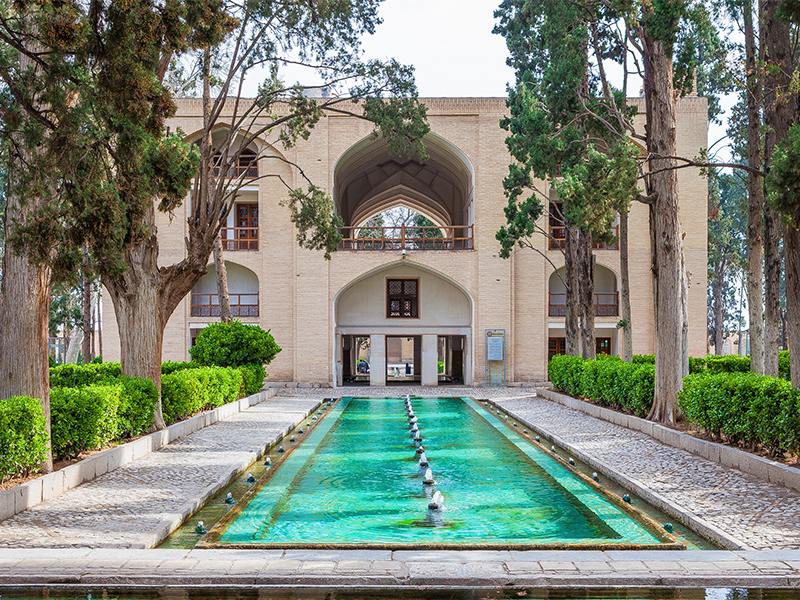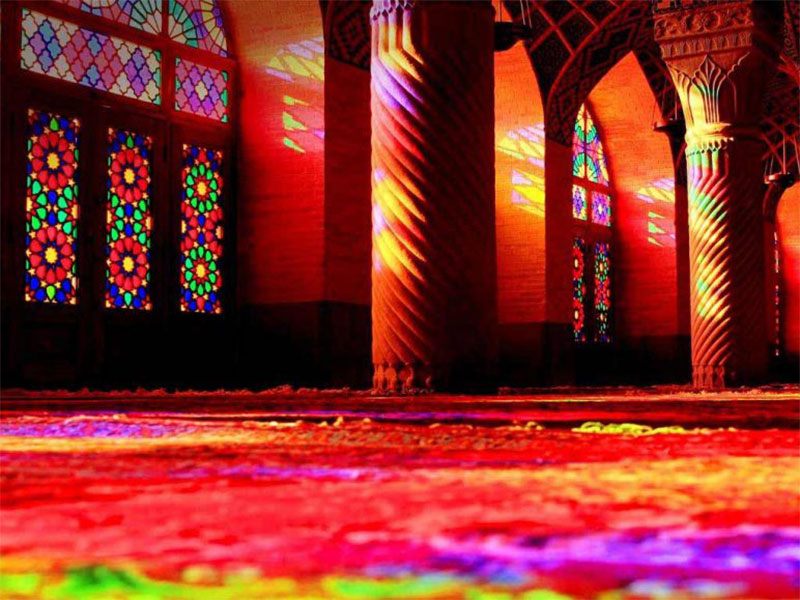Fin Garden in Kashan: Photos, Architecture, Plan, History
Fin Garden, also known as Bagh-e-Fin, in Kashan, is one of nine fascinating Persian gardens on the UNESCO world heritage list. Fin Garden is a historical garden and one of the most visited tourist attractions in Isfahan province. It attracts many tourists and travelers from around the world. This garden dates back to the 16th century when the Safavid dynasty ruled. Then it underwent some reconstruction in the late 19th century. It was highly recognized and expanded during the reign of Fat′h Ali Shah Qajar in the 19th century. The garden may date back to before the Safavid period; however, no valid document is available. During the reign of King Abbas I of Persia, the Persian garden was reconstructed into its current form. Travel to Iran and visit Fin Garden in Kashan to experience how it feels to step into heaven.
Fin Garden History
The plan of the Fin Garden is a kind of elaborated Chahar Bagh with a pavilion at the intersection. As a traditional Chahar Bagh with a large area of thousands of square meters, it is surrounded by trees, shrubs, water flows, and a high curtain wall with circular towers separating this oasis from the surrounding desert. Fin Garden is also famous for its historical tragedy. Amir Kabir was the chief minister to Naser al-Din Shah Qajar. He was one of the most innovative men in the Qajar period and was murdered in Fin Garden in 1852. Once registered as national property, Fin Garden became a UNESCO World Heritage Site. Some believe that Ghiyāth al-Dīn Jamshīd Kāshānī, a Persian astronomer and mathematician, was the designer of the garden. On the other hand, some say it was the great art of Sheikh Bahaei, a Shia Islamic scholar, architect, mathematician, and poet who lived in the late 16th and early 17th centuries.
A Heaven in Hiding
Fin Garden, a splendid sample of Persian gardens, exhibits a good combination of nature, culture, history, and architecture. All architectural elements are elaborately applied to make a masterpiece that absorbs eyes for a long time. Persian gardens mainly lie in the heart of deserts. Seeing such magnificent green places in hot and arid areas would keep travelers in awe.
The construction of the pavilion in the middle of the garden, along with two dynamic elements of trees and water, brings about the identity of this cultural and historical attraction. Water plays a vital role in the design of Fin Garden. The sound of the flowing water can truly ease one’s soul. To have a perfect day in Fin Garden, do not forget to visit Fin Garden tea-house near the source of the spring. There are many trees shading the water full of fish. Travel to Iran and enjoy exploring one of the most beautiful examples of Persian architecture. Stroll around and listen to the peaceful sound of running water and the whistling sound of leaves.

The splendid decorations of Fin Garden, Kashan
Traditional Persian Fountain
Though the garden appears lush, it is surrounded by a desert landscape where water is scarce. However, the water runs through pools and canals with abundant beauty in the garden. The water is supplied from a spring that heads toward a pool behind the Persian garden. The height difference between the pool behind the Fin garden and the canals running through it make fountains throw the water upright by gravity. The water supply system is very sophisticated. There are clay pipes one meter beneath all the pools, and they connect to the main pools on one side and are blocked on the other.
Since the ends of the clay pipes are closed, the water flows out of the fountains. Since the ground is sloping and in order to divide the pressure, the pipes’ diameters have been built differently from each other. The pipe head is thicker than its end; therefore, water throws out of them with an equal amount. Twelve springs emerge from the main pool called Howz Joosh. Then it runs through canals ornamented with turquoise tiles. The eye-catching color of the tiles is in contrast with the color of the desert surrounding the garden.
Persian Howz Architecture
There is a fascinating pool in Fin Garden called Howz Joosh. It was once covered by tiles inspired by the design of Kashan carpets. Louvre Museum displays some looted tiles from the early Pahlavi period. Once the Britains attempted to restore the pool, but they failed to do so. Professor Pirnia- an Iranian architecture professor- also wanted to restore the Howz Joosh, but as he demolished one corner, he noticed clay pipes beneath each of the holes. Based on the calculations and pipe sizes, he decided he could not restore them and stopped manipulating them. Water flow not only cools the environment in hot seasons but also provides tranquility for humans through its soft sound.
Greenery of Fin Garden
As one of the most beautiful Persian gardens, the Fin Garden of Kashan contains many trees and shrubs. Several tall trees line its pathways. Compared to the hot desert surrounding the garden, the tall trees and abundance of water are a welcome contrast. There are hundreds of cypresses plus several plane trees in Fin Garden. Regarding the old age of trees, it seems that the evergreen trees of Fin Garden are mostly cypress trees while planting a few plane trees was considered to enhance the visual quality. Aside from that, the cypress is often represented as a symbol of beauty in the Persian language. The trees are approximately 100 to 470 years old. It embraces other flowers such as lilies, eglantine, jasmine, violets, and tulips. In constructing the garden, symmetry played an important role, but slowly sidewalks and buildings in the complex disrupted the harmony.
A Tragedy within Garden’s Beauty
Besides the small bathroom constructed in the Safavid period, Qajar architects built a large bathroom (Hamam). It was in the small bathroom that Amir Kabir was murdered in 1852. Amir Kabir served as the prime minister of Nasar al-din Shah, a ruler of the Qajar Dynasty from 1848 to 1851. He made significant changes, especially in the fields of education and administration. As a result of these actions, the prime minister became popular, but he provoked the anger of the royal family. Finally, Amir Kabir was dismissed by the king of Persia. His murder occurred later in the Fin Garden after he was imprisoned there. A tragic connection to the murder led to the garden’s disrepair until 1935 when they restored it as a national monument.
Similar to Narenjestan Garden and Eram Garden in Shiraz, Dowlatabad Garden in Yazd, and Shazdeh Garden in Kerman, Fin Garden is a masterpiece combining natural and artificial elements. The architectural structures represent both Safavid and Qajar styles. In the center of the garden stands the Safavid pavilion (Kushk), and at the end stands the Qajar pavilion (Kushk) with beautiful paintings on its walls. The small bathroom and Emarat-e-Sardar (an entrance building) belong to the Safavid period. There was also the Karim Khani Nook (Kalvat-e-Karimkhani), along with the national museum and the royal bathroom during the Qajar period. Kashan National Museum is worth a quick visit as well. It showcases some ceramics and calligraphy. However, the most exquisite highlight is the shah’s delightful shotor gelou, a two-story pool house in the middle of the complex.
Are you planning to travel to Iran? Please read Things to do in Kashan and Check out our Iran tours.


















 Iran Doostan Tours
Iran Doostan Tours





